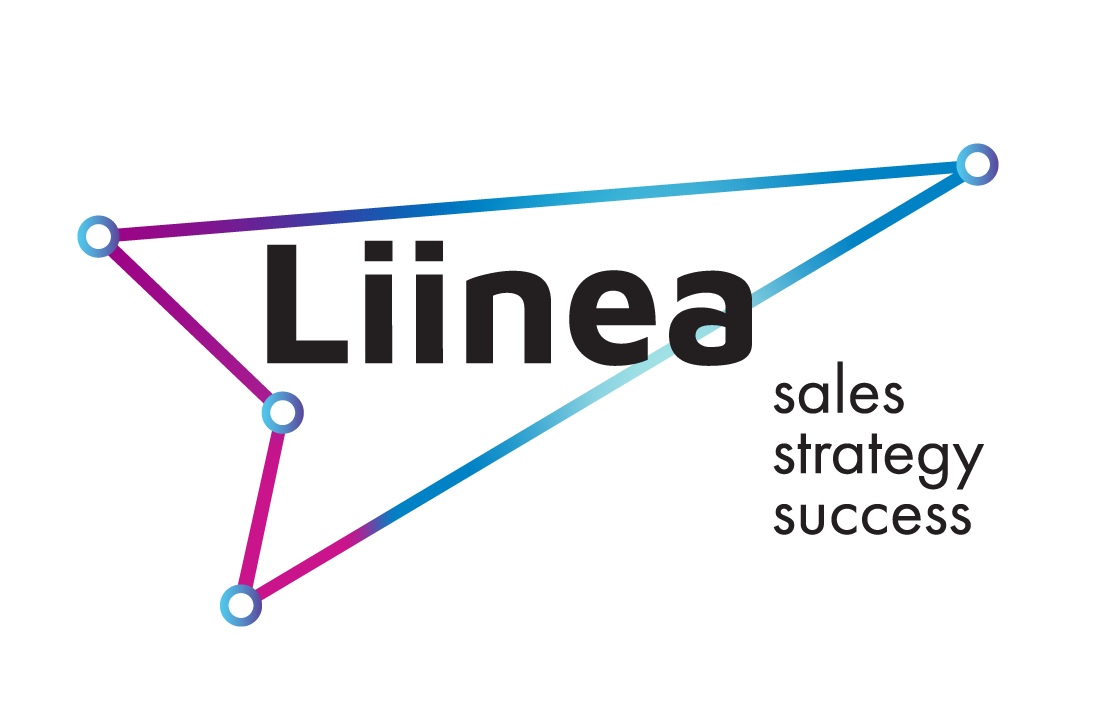Karina Collis
the science behind cold emails that work
PART 1 - KEY PRINCIPLES, templates and examples
By Karina Collis, April 2020
Stop spamming and start selling
The idea of business emails was popularised in the late 90s. Less than 25 years later it is the most common means of business communication.
When I started as a sales representative more than 15 years ago, cold calling was the best and most common way to reach out to your potential prospects. Every salesperson knew that it was the most powerful way to build a relationship, to gather more information and qualify your prospects. Very rapidly, marketers realised that they could reach a much wider audience with digital communication, and we entered the era of cold emailing.
Cold email is a simple and fast way to introduce a product's value proposition to your prospect and set up an introductory call. However the average response rate to cold email is extremely low and varies from 1% to 4% depending on the industry. Only 9% of sales emails get opened. So how to increase your chances of success?
The vast majority of growth-hacking techniques used in cold emailing are overused and don't work anymore. I want to share some key rules and principles that always work, because they are fundamental to any communication. In the next two articles, I will cover best practices for calls to action and follow up strategies. At the end, You should be able to stop spamming and start selling.
The vast majority of growth-hacking techniques used in cold emailing are overused and don't work anymore. I want to share some key rules and principles that always work, because they are fundamental to any communication. In the next two articles, I will cover best practices for calls to action and follow up strategies. At the end, You should be able to stop spamming and start selling.
I have read and reviewed hundreds of cold calling emails and picked out the best and the worst. I will share examples of what to do and especially what not to do in cold emails. I want to thank all the people who sent me these cold emails. I have decided to not to hide names behind good examples to promote the businesses and hide the names of those who could have done a better job so as to not embarrass anyone.
Should you sell ice to Eskimos?
Before we even start I want to share with you the main secret behind any successful emailing campaign. Success derives from a well qualified target list.
No matter how well your email is structured, if you target the WRONG audience, the result will be close to zero.

So how does a great cold email look?
I received this email from Vendasta, a software company. And I really liked it because it:
- is short
- is easy to read
- has my name in the subject line
- is personal
- is engaging
- proposes a clear next step

Where to start?
If you want to increase the response rate of your emailing campaign you need to prove that you are a human being and not a sales and marketing algorithm
1
Build a list of target accounts /persona's. Divide them by segment (by any common factor). It will allow you to customise your email for a group of people
2
Research their challenges, search for related news, surf through their LinkedIn or Twitter activities
3
Think about who can introduce you to these people. Introduction is by far the most effective way to approach anybody
The "4S" rule for a powerful email

Use a powerful
SUBJECT LINE
SUBJECT LINE
- Should be relevant and related to the content
- Shouldn't be too "salesy"
- No clickbait (fake info)

Be
SHORT
SHORT
No one has time to read. The ideal email for generating responses is around 100 words

Have
STRUCTURE
STRUCTURE
1.Who are you?
2.Why should I care?
3.What is the value for me?
4.Why are you credible?
2.Why should I care?
3.What is the value for me?
4.Why are you credible?

Propose next STEPS
- What action do you want the prospect to take after reading your email?
- Include a clear next step
How to write an email subject line that gets opened?
Even though there ARE no hard-and-fast rules, here are the eight most commonly used ways to chose the right subject line
1
Short and intriguing
"Quick question", "Intro", "New initiative"
2
Personalised
Use a personal name or a company name: "Any thoughts, Karina?"
3
Referral
If you were referred, say it: "Hello from John Smith", "Referral from Marie Smith"
4
Special occasion
Use a special occasion: "Congratulations on …"
5
"Re:"
"Re:" gives an Impression of continuance communication
6
Small letter instead of a capital in the first world
It can create a more personal feeling (e.g. "quick call")
8
Emojis
It helps to stand out but may tag your email as a marketing one
How long should the subject line be?
The fact that there is no one-size-fits-all becomes evident when comparing results of different research. The results vary widely. For example research from Salesloft shows that a two words subject line is a big winner. A similar research by Retention Science shows that the optimal length is from 6 to 10 words.
 |  |
What is a cold email with a clear structure?
Your reader needs to understand who you are, why you are contacting him and what is in it for him. Below is a universal template that will help win more clients.
1
CREDIBILITY
2
PAINT POINTS
3
SOLUTION
4
NEXT STEP
Here is the universal template that will work in the majority of the situations:
Hi….,
This is John Smith from [company name]. I am working with companies similar to yours in [industry/region…], and I found that many struggle with [major business challenge].
Is this something you're finding challenging as well? For the majority of my clients, it has been useful to [your solution]. It helped them achieve [quantified results].
I would be happy to connect to share a few ideas on how to [repeat the challenge]. Would you be available for a 5-minute call this Friday at 9am?
Best Regards,
...
Hi….,
This is John Smith from [company name]. I am working with companies similar to yours in [industry/region…], and I found that many struggle with [major business challenge].
Is this something you're finding challenging as well? For the majority of my clients, it has been useful to [your solution]. It helped them achieve [quantified results].
I would be happy to connect to share a few ideas on how to [repeat the challenge]. Would you be available for a 5-minute call this Friday at 9am?
Best Regards,
...
Key building blocks of a power email
 |
Let's look at each of these fundamental rules in more detail.
Rule #1. Don't spam: focus on the prospect and his pain points
Unfortunately, your reader's mailbox gets spammed with irrelevant information continuously. Every spam email is gradually decreasing the probability that your email will be opened.
 |
What does it mean to focus on your prospect?
 |
Focus on your prospect's pain points.
 |
 |
Rule #2. Design: be brief, clear and structured
I have a question for you: look at the two emails below. Which one are you more likely to read?
 |
Your reader will give it 3-7 seconds on average to read your email. Be brief and think about a visual presentation of the text. How easy is it to read?
I advise all the sales teams I work with to follow "The iPhone rule": the message should fit on the screen of your mobile phone (around 100 words).
I advise all the sales teams I work with to follow "The iPhone rule": the message should fit on the screen of your mobile phone (around 100 words).
The iPhone rule
The message should fit on the screen of your mobile phone (around 100 words)
- Keep it short and simple
- Think about the structure
- Be clear and easy to understand
- Don't use unfamiliar jargon

Rule #3. No email without added value
As a salesperson, your role is to create value for every prospect. How do you do it? Remember, your prospects don't care about the product you sell, they care about the outcome. The universal formula to create a value proposition is "WE HELP + KEY RESULTS (improve/reduce/save...) + BY HOW MUCH ( %, $, time...)". However, what will help you gain "the winning edge" is your focus on the future. Like in a time machine, your goal is to help your prospect image what his or her life will be with your solution. You can achieve this by using statements such as: "Imagine", "What if…", "Wouldn't it be great…" or just "if"? Below is an example of how you can use it to master value proposition.
 |
Rule #4. Be interesting, empathetic and engaging
Remember, in a sales process you are building relationships which are based on personal trust and likeability. Show that you understand how busy your prospect is by simply saying " I know that you are busy. But I still decided to contact you because …. ". Try to find some common interests, research for news and insights to personalise your message.
 |
Special occasions, good or bad, bring people together, that is why prospecting around Easter, New year or around any holidays can be more successful. Coronavirus causes a huge stress on the lives of people and few warm words with wishes of health can melt a heart of stone. Recently I received an email with a special offer that started in the following way: " Hi Karina, First of all, I hope you and everyone at Liinea are well in these uncertain times. We feel it is our duty to help as many companies as we can in this challenging times. That is why we have decided...". Not only did the company personalise the message for Liinea, the reason to contact was "to help". It is a good example of empathy and personalisation.
Fake personalisation. Your boss as an exuse?
In this email I received recently the sender was claiming that her boss suggested to contact me.
On the internet you can find this technique promoted as "email marketing hack". Be careful if you want to use it! In my view it reduces the credibility of the sales person and gives a nasty taste of fake personalisation.

Compliments will never go out of fashion

We all know that sincere compliments put people in a good mood and make them more receptive and open-minded to your ideas. You can compliment their experience, like it is done in the example on the top left, or you can compliment their product or even their website by saying "I saw your website and really liked the design and the product range you sell!"
However, obvious flattery might have a very opposite, negative effect. By sounding generic you might lose your credibility and the trust of the reader. See the bottom left example.
Ask engaging questions and qualify
Questions are the most powerful instrument of persuasion. In a email questions help to qualify and engage your prospect. Questions turn your email from a monolog to a dialog.
 |
Another useful structure is the following:
"I wonder if you might be open to an initial conversation in case there is a need for ….?"
This way to ask helps to qualify your prospect ("if there is a need") and it engages is into a conversation in a discrete and non intrusive way.
"I wonder if you might be open to an initial conversation in case there is a need for ….?"
This way to ask helps to qualify your prospect ("if there is a need") and it engages is into a conversation in a discrete and non intrusive way.
How to stand out? In B2B less is more!

Think about how to attract the attention of your prospect. The easiest way to achieve this is by adding all sorts of visuals:
- Impactful pictures
- Infografics with key benefits
- Relevant GIFs, videos
It is very easy to overdo it. Make sure that your ways to impress are in line with what you offer.
Another rising trend is to send a video message. The same rules apply there: be structural, brief and focus on your customer and his/her pain points. I am using an application called Soapbox. It allows you to video record and embed this video into an email with a few clicks.
Rule #5. Propose a clear next step

What is the purpose of your email? To move your prospect to action? If that is the case, you need to be very clear about the action you want your reader to take. An unclearly stated call for action is the most common mistake that I see across cold emails. It should be concrete and easy to follow, for example: "Would you be available tomorrow at 9am for a 5 minutes intro call?" or "What time will work for you, Monday at 10am or Tuesday 3pm?"
The example on the right ticks almost all the boxes but it does not have a call to action. It is short, personal, engaging, it offers value but without a clear call to action the success of this email is likely to be zero. It can be improved by saying "Reply "interesting" and I will provide you with more information" or "When on Thursday is a good time to talk"? By the way, I will focus on the principles of calls to action in part two of my article.
Cold email check list
To help you audit your work, I am sharing with you a cold email check list. When sending an email, make sure that:
Subject line captures the attention
Use a referral where possible
Personalise, establish credibility
State a compelling value proposition
Share valuable insights and resources
Write in clear, simple language
And the most important: make the prospect feel that it was written just to him/her
Use a referral where possible
Personalise, establish credibility
State a compelling value proposition
Share valuable insights and resources
Write in clear, simple language
And the most important: make the prospect feel that it was written just to him/her

My final advice
There is no silver bullet. The only way to find out what works for your company is to experiment.
Be creative!
Write more!
Use more creativity and less templates picked up on the Internet, because no one is interested in receiving another email that "sounds like a broken record"
There is no silver bullet. The only way to find out what works for your company is to experiment.
- Start from 5 cold emails templates
- Send each to 10 different prospects (don't forget to personalise, don't send a generic email!)
- Measure the success rate
Be creative!
Write more!
Use more creativity and less templates picked up on the Internet, because no one is interested in receiving another email that "sounds like a broken record"
In Part II of the THE SCIENCE BEHIND COLD EMAILS THAT WORK we will be talking about principles behind a winning call to action, while in Part III we will discuss a follow up strategy
Don't forget to check all the articles:
The science behind cold emails that work. PART 1 - KEY PRINCIPLES, TEMPLATES AND EXAMPLES
The science behind cold emails that work. PART 2 - CALL TO ACTION THAT MOVES
The science behind cold emails that work. PART 3 - FOLLOW UP STRATEGY AND FOUR FOLLOW UP TEMPLATES
The science behind cold emails that work. PART 1 - KEY PRINCIPLES, TEMPLATES AND EXAMPLES
The science behind cold emails that work. PART 2 - CALL TO ACTION THAT MOVES
The science behind cold emails that work. PART 3 - FOLLOW UP STRATEGY AND FOUR FOLLOW UP TEMPLATES
by Karina Collis | April 2020
As a special thank you for reading my article,
I offer to review your cold email template personally
as part of your free sales consultation
I offer to review your cold email template personally
as part of your free sales consultation
Arrange now >>>

Karina Collis
In my Liinea sales coaching workshops, I work with founders , VP of Sales and sales teams, helping them get to optimised sales processes that result in sales that close faster. If you are looking to scale up and accelerate your sales, contact me at karina@liinea.com





